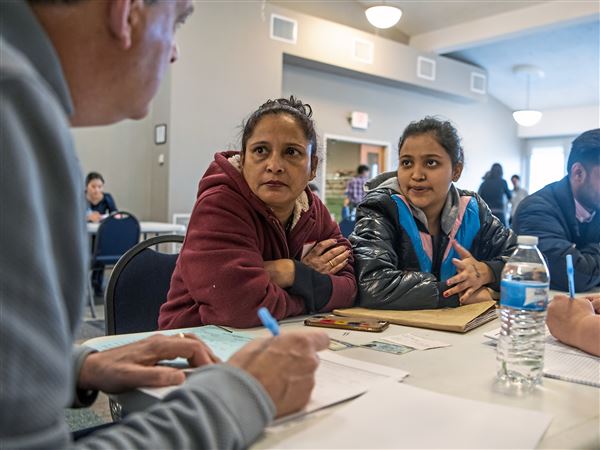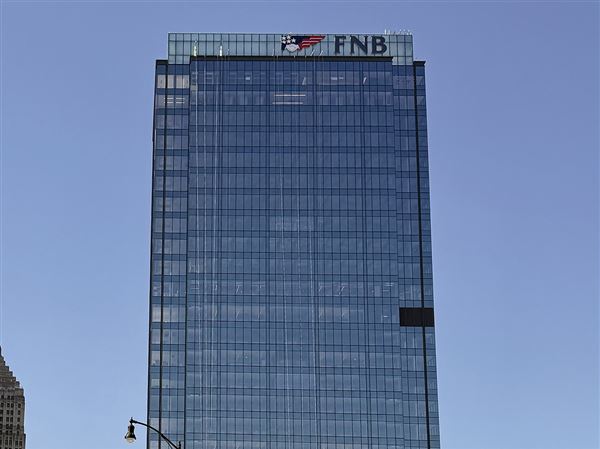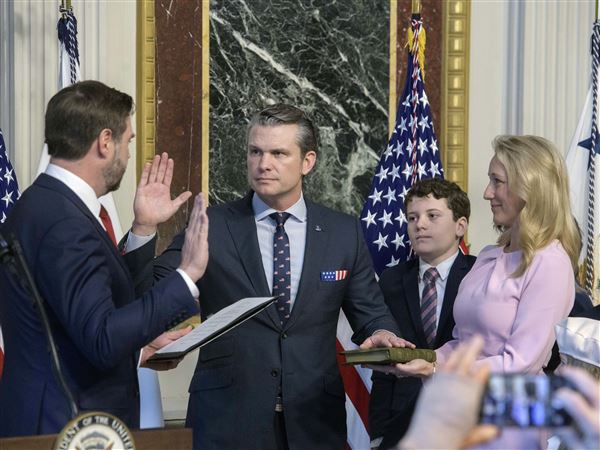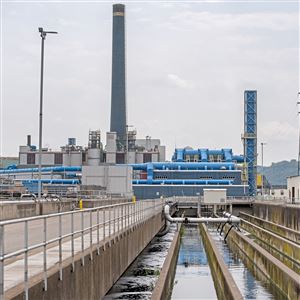Now, 2018 officially is the wettest year on record in Pittsburgh with 57.83 inches of rain descending on our city. The previous record was set in 2004 with 57.41 inches. For a region that typically gets close to 38 inches a year, 2018 delivered nearly 50 percent more than normal. That’s a lot of rain!
Not only did we experience more frequent rain events in 2018, the storms were also more intense than any we’ve seen. These heavy downpours led to streams overflowing, roads flooding, landslides and basements backing up with rising water and raw sewage. Much property damage occured and a life was lost from these events, making it clear that stormwater management is a public health and safety issue.
Our combined sewer system, treatment facilities and roads do not have the capacity to handle the amount and intensity of water we experienced last year. These extreme storms overflow our combined sewer system and carry raw sewage into our rivers — impacting water quality in Pittsburgh and throughout our region. Last year’s record rainfall has brought more urgency to fix Pittsburgh’s stormwater-related problems.
The problem is serious enough that the U.S. Environmental Protection Agency (EPA), the Pennsylvania Department of Environmental Protection (DEP), Allegheny County, Allegheny County Sanitary Authority (ALCOSAN), the City of Pittsburgh, Pittsburgh Water and Sewer Authority (PWSA) and municipalities in our region have adopted stricter environmental regulations to reduce combined-sewer overflows, manage localized stormwater impacts and address regional stream and river water quality.
Fixing this problem requires a multi-pronged approach from government and the public. Here’s what PWSA is doing to affordably address these pressing threats to safety, public health and the environment:
• Stop as much water as possible before it goes into sewers. PWSA’s Green First Plan provides a comprehensive approach to manage stormwater. It identifies projects to control stormwater before it flows into our sewers, thus reducing sewer overflows, street flooding and basement sewer backups. This Green First plan may reduce the need for additional citywide “gray” infrastructure projects.
Three stormwater-management demonstration projects were completed in 2018 to collectively manage 3.7 million gallons of stormwater per year, but we need to do much more. In late 2018, we started the design process for stormwater solutions in Four Mile Run, which includes Schenley Park, Squirrel Hill, Oakland, Greenfield and Hazelwood; Negley Run, including Washington Boulevard; and Saw Mill Run along Route 51. Our planned investments in the coming decades will exceed several hundred million dollars.
• Take responsibility for Pittsburgh’s stormwater duties. No single government agency is responsible for managing stormwater in Pittsburgh. Working with the City, EPA and DEP, PWSA is forming a stormwater division to consistently comply with regulatory requirements, reduce stormwater impacts and optimize control of combined-sewer overflows. PWSA’s stormwater division will build new stormwater projects and operate and maintain them.
• Prioritize investments. Stormwater impacts are seen routinely across Pittsburgh. We are working with city agencies to develop criteria to prioritize projects throughout the city, which will help us address the most significant and destructive problems first.
• Engage community partners. In November, we formed a Stormwater Advisory Group to consider the need and strategy for dedicated stormwater fee and incentive programs. We are also working with community groups and partner agencies in Saw Mill Run and Negley Run to address historic flooding and water-quality issues in these areas where extreme flooding has occurred.
• Strengthen the bigger system. PWSA and ALCOSAN meet regularly to coordinate our projects and make them the best combination of green and gray infrastructure. Blending both is expected to provide the most affordable approach to address the region’s water-quality problems. The regional work is overseen by the EPA to address combined-sewer overflows and water quality impacts.
Educate Pittsburgh residents about the sewer system. Our sewer system isn’t the most glamorous part of Pittsburgh, but it belongs to all of us and is critical to our health and safety. We at PWSA attend community events, meet with neighborhood groups and host monthly activities at the Carnegie Science Center to build awareness about the sewer and stormwater systems. We all need to appreciate how pipes control wastewater and stormwater and do what we can to keep them working.
We’re all in this together. Managing stormwater is a tremendous undertaking and we can all do our part to help. If you’re a homeowner in Pittsburgh, consider installing a rain barrel, planting a rain garden or using paving materials that absorb water. Simply using native plants in an existing garden can help — they are more resilient to our climate, maintain healthy soil and absorb water.
Even if 2019 doesn’t bring as much rain, we can’t ignore the problems of too much stormwater entering our sewer system. We all can see that Pittsburgh’s existing infrastructure presents many unique and challenging problems. We all can help solve them.
For more information, visit https://pgh2o2030.com/stormwater/.
Robert A. Weimar is executive director of the Pittsburgh Water and Sewer Authority.
First Published: January 27, 2019, 5:00 a.m.
















